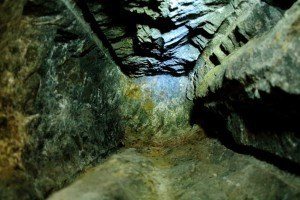 In May, 2013 PT Freeport Indonesia stopped mining at all of their locations after a tunnel’s roof collapsed. Reports indicate ten people managed to escape the Grasberg mine, five were killed instantly, and 23 others were trapped inside. Despite rescue efforts, a total of 28 people were killed when the underground training facility tunnel collapsed. PT Freeport Indonesia is an Indonesian company owned by Freeport-McMoRan Copper & Gold and the Government of Indonesia. The event is still being reviewed by the Indonesian government.
In May, 2013 PT Freeport Indonesia stopped mining at all of their locations after a tunnel’s roof collapsed. Reports indicate ten people managed to escape the Grasberg mine, five were killed instantly, and 23 others were trapped inside. Despite rescue efforts, a total of 28 people were killed when the underground training facility tunnel collapsed. PT Freeport Indonesia is an Indonesian company owned by Freeport-McMoRan Copper & Gold and the Government of Indonesia. The event is still being reviewed by the Indonesian government.
The construction of, and working within, underground tunnels, shafts, chambers, and passageways requires personnel to work under many hazards, including:
- reduced light and ventilation conditions;
- difficult or limited access and egress;
- exposure to air contaminants; and
- exposure to fire/flooding/explosion hazards.
Tunnels are generally grouped into four broad categories; depending on the material, workers are subjected to very different working environments:
- hard rock (e.g., granite, quartz);
- soft rock (e.g., clay, shale, chalk, and friable sandstone);
- soft ground (soil and weak rock); and
- subaqueous.
To keep personnel safe in these widely different environments, there are laws and regulations that companies must follow to better ensure safety. Additionally there are industry codes, standards, guidelines and best practices. Finally, there are company-specific, as well as mine site-specific, policies and procedures used to help keep workers safe. However, for these requirements to be effective, the following organisational elements need to be in-place and functional:
- leadership (a commitment from managers and front-line supervisors to keep workers safe);
- training (personnel need to understand the hazards and what will keep them safe);
- consequence management (a system in place to ensure workers follow requirements);
- communication (communicate what’s working and what isn’t working to keep workers safe); and
- continuous improvement (a system that methodically improves ways to keep workers safe)
Technology is also playing a significant role in the prevention and handling of mining accidents.
There are many technnology suppliers who have chosen to focus on the development and deployment of mining safety applications. These technologies range from various communication solutions to proximity detection warnings to automated corrective actions. While legislation has come a long way since the early days of mining, progressive technology suppliers and mining companies themselves are also leading the way to ensure safe mining practices.
At the forefront of safety technologies in hard rock, underground mines is Newtrax Technologies. Newtrax has developed a sophisticated real-time communications network that operates completely wirelessly – i.e. no wires for communications and no wires for power. This feature makes the system easy to deploy all the way to the working mine face. Combine that with safety-focused application development, and you have a system that can perform in ways other solutions are simply unable to do at this time, such as:
- Tracking and monitoring the health of equipment and personnel throughout the mine;
- Allowing workers to initiate emergency or panic alarms from their cap lamp;
- Providing man-down warnings if a worker has fallen unconscious and cannot call for help;
- Restoring two-way connectivity from another level to trapped miners due to falls of ground;
- Instantaneously notifying workers of a mine-wide evacuation, including confirmation that the message has been received.
These are just a few of the ways that Newtrax Technologies is working to improve the safety of miners in the event of a tunnel collapse or mining accident. They are also working diligently, together with their partner technology companies, to not just support mine personnel after an accident has taken place, but to also help provide early warning signs as to when dangers of a fall of ground or explosion may be present.
Coupling the Newtrax system with geotechnical instruments from Mine Design Technologies (MDT) and gas detection sensors from Conspec Controls creates a complete real-time technology solution designed to monitor the health of a mining operation, including: ground movement, gas detection and environmental monitoring. The sensors keep track of the mine’s health, and the communication backbone makes sure the right people know about it when it matters.
If you’re interested in exploring how applications from Newtrax, MDT or Conspec might be put to use at your mining operation in Africa or Europe, please contact RAMJACK Technology Solutions. As the implementation partner of all three of these leading organisations, we would be happy to support your transition to safer operations.

